#atomic research
Text
The Rand Corporation, which acts under the orders of the United States Air Force and, among other activities, issues reports on technical progress in the Soviet Union, published in 1956 a study with the following statement:
But the Russians apparently dismissed the idea that it [the bomb] would be feasible for the war then raging. They made no attempt to conceal the fact that they had stopped atomic research; and they apparently did not assign priority to the subject of atomic energy in their foreign espionage. ... By 1943 the Russians had resumed an atomic development programme with the apparent intent of trying to acquire nuclear weapons.
"Brighter than a Thousand Suns: A Personal History of the Atomic Scientists" - Robert Jungk, translated by James Cleugh
#book quotes#brighter than a thousand suns#robert jungk#james cleugh#nonfiction#rand corporation#united states#air force#reports#progress update#soviet union#50s#1950s#russians#atom bomb#atomic research#priority#atomic energy#espionage#40s#1940s#nuclear weapons
0 notes
Text
The possibility had to be taken into account that preliminary experiments might lead to a premature explosion which would release dangerous radioactivity and imperil the civil population.
"Brighter than a Thousand Suns: A Personal History of the Atomic Scientists" - Robert Jungk, translated by James Cleugh
#book quote#brighter than a thousand suns#robert jungk#james cleugh#nonfiction#town planning#experiments#atomic research#explosion#radiation#radioactivity
0 notes
Photo

User Research Repository
In this article, I speak about how we started our User Research Repository, using Atomic Research. I also detail my vision to impact the product and, at the end, the user experience.
Read the article
0 notes
Text
saw atomic habits on a friend's shelf and was fighting not to make a face <3
#nothing against self-help books but one thing ab me is i am getting most of my advice from MDs i admire#and wonderful professors whom i adore w all my heart <3#atomic habits is just a book i refuse to touch after it got verified that most of the research in it was bs#p
35 notes
·
View notes
Text
I have just written an essay about nuclear weapons and it turned out so great yet so simple that I feel proud of myself. I have to write another essay for my Chemistry class, however the topic is my choice.
Do you guys have any topic suggestions?
#studying#student life#studyblr#my stuff#science#high school#school#hs#chemistry#research#physics#nuclear#atomic bomb#pls help#please help#help#suggestion#my post#original post#study blog#study aesthetic#student#study motivation
14 notes
·
View notes
Text


On 6 August 1945, during World War II (1939-45), an American B-29 bomber dropped the world’s first deployed atomic bomb over the Japanese city of Hiroshima.
The explosion immediately killed an estimated 80,000 people; tens of thousands more would later die of radiation exposure.
Three days later, a second B-29 dropped another A-bomb on Nagasaki, killing an estimated 40,000 people.
Japan’s Emperor Hirohito announced his country’s unconditional surrender in World War II in a radio address on August 15, citing the devastating power of “a new and most cruel bomb.”
The Manhattan Project
Even before the outbreak of war in 1939, a group of American scientists — many of them refugees from fascist regimes in Europe — became concerned with nuclear weapons research being conducted in Nazi Germany.
In 1940, the U.S. government began funding its own atomic weapons development program, which came under the joint responsibility of the Office of Scientific Research and Development and the War Department after the U.S. entry into World War II.
The U.S. Army Corps of Engineers was tasked with spearheading the construction of the vast facilities necessary for the top-secret program, codenamed “The Manhattan Project” (for the engineering corps’ Manhattan district).

Over the next several years, the program’s scientists worked on producing the key materials for nuclear fission — uranium-235 and plutonium (Pu-239).
They sent them to Los Alamos, New Mexico, where a team led by J. Robert Oppenheimer worked to turn these materials into a workable atomic bomb.
Early on the morning of 16 July 1945, the Manhattan Project held its first successful test of an atomic device — a plutonium bomb — at the Trinity test site at Alamogordo, New Mexico.
No Surrender for the Japanese
By the time of the Trinity test, the Allied powers had already defeated Germany in Europe.
Japan, however, vowed to fight to the bitter end in the Pacific, despite clear indications (as early as 1944) that they had little chance of winning.
In fact, between mid-April 1945 (when President Harry Truman took office) and mid-July, Japanese forces inflicted Allied casualties totaling nearly half those suffered in three full years of war in the Pacific, proving that Japan had become even more deadly when faced with defeat.
In late July, Japan’s militarist government rejected the Allied demand for surrender put forth in the Potsdam Declaration, which threatened the Japanese with “prompt and utter destruction” if they refused.

General Douglas MacArthur and other top military commanders favored continuing the conventional bombing of Japan already in effect and following up with a massive invasion, codenamed “Operation Downfall.”
They advised Truman that such an invasion would result in U.S. casualties of up to 1 million.
In order to avoid such a high casualty rate, Truman decided – over the moral reservations of Secretary of War Henry Stimson, General Dwight Eisenhower and a number of the Manhattan Project scientists – to use the atomic bomb in the hopes of bringing the war to a quick end.
Proponents of the A-bomb — such as James Byrnes, Truman’s secretary of state — believed that its devastating power would not only end the war but also put the U.S. in a dominant position to determine the course of the postwar world.
'Little Boy' and 'Fat Man' Are Dropped
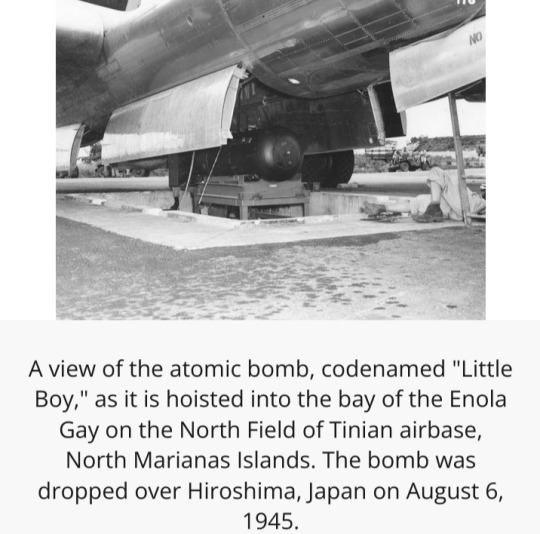
Hiroshima, a manufacturing center of some 350,000 people located about 500 miles from Tokyo, was selected as the first target.
After arriving at the U.S. base on the Pacific island of Tinian, the more than 9,000-pound uranium-235 bomb was loaded aboard a modified B-29 bomber christened Enola Gay (after the mother of its pilot, Colonel Paul Tibbets).
The plane dropped the bomb — known as “Little Boy” — by parachute at 8:15 in the morning.
It exploded 2,000 feet above Hiroshima in a blast equal to 12-15,000 tons of TNT, destroying five square miles of the city.
Hiroshima’s devastation failed to elicit immediate Japanese surrender, however, and on August 9, Major Charles Sweeney flew another B-29 bomber, Bockscar, from Tinian.
Thick clouds over the primary target, the city of Kokura, drove Sweeney to a secondary target, Nagasaki, where the plutonium bomb “Fat Man” was dropped at 11:02 that morning.
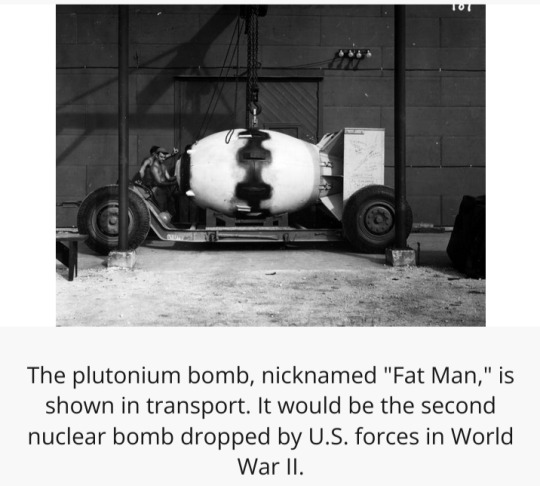
More powerful than the one used at Hiroshima, the bomb weighed nearly 10,000 pounds and was built to produce a 22-kiloton blast.
The topography of Nagasaki, which was nestled in narrow valleys between mountains, reduced the bomb’s effect, limiting the destruction to 2.6 square miles.
Aftermath of the Bombing

At noon on 15 August 1945 (Japanese time), Emperor Hirohito announced his country’s surrender in a radio broadcast.
The news spread quickly.
“Victory in Japan” or “V-J Day” celebrations broke out across the United States and other Allied nations.
The formal surrender agreement was signed on September 2, aboard the U.S. battleship Missouri, anchored in Tokyo Bay.
Because of the extent of the devastation and chaos — including the fact that much of the two cities' infrastructure was wiped out — exact death tolls from the bombing of Hiroshima and Nagasaki remain unknown.
However, it's estimated roughly 70,000 to 135,000 people died in Hiroshima and 60,000 to 80,000 people died in Nagasaki, both from acute exposure to the blasts and from long-term side effects of radiation.



#Bombing of Hiroshima and Nagasaki (1945)#6 August 1945#atomic bomb#Hiroshima#Nagasaki#B-29 bomber#A-bomb#U.S. Army Corps of Engineers#The Manhattan Project#nuclear weapons research#Office of Scientific Research and Development#War Department#World War II#WWII#uranium-235#plutonium (Pu-239)#nuclear fission#plutonium bomb#J. Robert Oppenheimer#Oppenheimer#Trinity test#Potsdam Declaration#General Douglas MacArthur#Operation Downfall#Henry Stimson#General Dwight Eisenhower#Enola Gay#Colonel Paul Tibbets#Bockscar#V-J Day
34 notes
·
View notes
Text
Clocks and cogs
~1600 words || heavy use of cybertronian language for body parts, time and length || Just some Rung and Whirl bonding over how ancient Rung is :) || cross-posted to AO3

Heyy you know when you scroll your Tumblr and you find something so perfect as a fic prompt that you decide to make it into a fic? Well there's this post by @powerlineangel that fits into that category!

- ...If, given a choice, you could return to you wrecker days, would you?
- Would I? Would I?! You're seriously asking me that? - Whirl lifted himself up from the berth. He turned his helm so his optic would stare right at Rung, as if trying to intimidate him.
The therapist didn't even flinch, still waiting for an answer. Whirl kept his gaze on the orange mech, but instead of trying to come up with an answer, he got distracted by... something. He couldn't figure out what it was, but being in Rung's office today made him... uneasy. Something was wrong.
- Of course I would. - Whirl finally turned away his gaze, but was still almost painfully aware that something was bothering him. - Those were my coolest days!
Did the lightning in this office change?
-Wreckin', rulin', killing bots who deserved it.
Did Rung move everything in his office by a microhic just to mess with him? That doesn't sound like a Rung thing to do.
- Things were simpler during the war, y'know. No time to think about rights and wrongs.
Whirl was starting to get agitated. He wanted to get to the bottom of this, but he couldn't figure out what he's supposed to be looking for in the first place!
Rung stopped his train of thought with some clever remark and Whirl's voicebox made a grumpy noise. He wasn't listening to him right now, he wanted to figure out what--
And then it clicked. Quite literally: something made a familiar clinking sound and made Whirl look at the source of the noise. The source of the noise was somethere where Rung was sitting, so Whirl looked at the orange mech with confusion. And then it clicked for the second time, but this time metaphorically - it was Whirl's processor figuring out the source of his irritation. He didn't listen to Rung this entire time, but should've - because the feeling of uneasiness was coming from the therapist himself.
- You're annoying me. Right now. - Whirl said bluntly, again staring into Rung's face.
- I'd say I'm surprised, but I cannot bring myself to lie to you. - Rung started writing something on his datapad.
- Not in a usual way. - Whirl shook his head, - I mean, that too, that's always a thing. - Rung got intruiged and stopped writing. - I don't like the sounds coming from you.
- ...What do you mean by that?
- You're ancient, right? You gotta be full of cogs and levers.
- I wouldn't say it's as primitive as that...
- I've noticed it awhile ago. You sound very similar to my clocks. But right now the sounds are... off.
- I'm sure whatever is wrong with my inner workings can be fixed with a visit to the medibay. Besides-- - Rung tried to say something else, but got interrupted by a claw to his intake.
- Shh!
The office got silent. Whirl listened very intently, even got his audials closer to the mech in front of him. Even Rung directed his audio sensors inwards to figure out what bothered Whirl. And then his optics made it look like he winced at what he had heard.
- Alright eyebrows, sit here. Now I'm your therapist. - Whirl jumped off the berth, clanked his claws eagerly and gestured Rung to sit down, who hesitantly placed the datapad away, to his computer, and stood up. - Actually, no, wait. I need my stuff. I'll be right back.
- Or-- Whirl, - Rung stopped his patient midway through the door. - I could go with you. So you won't have to take the entirety of your workshop here.
If Whirl still had a face, he would probably smirk at how-- eager? Rung was. But he nodded instead, his voicebox making an amused sound.
- Sure.

- Get comfortable. - Whirl gestured over to the chair near the table.
Rung complied and sat down, curiously looking at blue mech's machinations. Claws quickly ghosted over the table, collecting the tray, lubricant vials and little boxes of spare cogs. Whirl put everything on a tray and turned around to his patient.
- I need you to open up. If you're not scared of me poking around in your chassis, that is.
Rung took off his glasses, placed them on the table, and laid his arms on the armrests. A low hiss broke the silence of the room as Rung's chassis opened up, revealing many mechanisms around the spark chamber.
Without much hesitation the tip of blue mech's claw transformed to reveal a tiny screwdriver and he dove right to the source. Stiff clicks and thuds filled Rung's audials. This felt... odd. Oddly comforting. Sure, Whirl is the ship's nutjob, he had a certain reputation and he had a certain history, but right now, him working so meticulously, so delicately inside Rung's chassis... The orange mech almost felt safe.
- When was the last time you changed your oil?
- Sometime in the last quartex. Why?
Whirl shook his head, took a step back and transformed his claw back into its full form.
- Wrong oil. Too viscous for a mechanism like yours. - Whirl put on an attachment on his claw (this one looked almost like a needle), took out a vial and dipped the needle inside, taking some lubricant onto it. He turned back to Rung and lowered himself back to work.
- W-well, - Rung got interrupted by claws snapping inside his chest cavity and hissed. Whirl raised his optic at him, but Rung waved him away. - That's the oil I've been using... for a long while. I think some medic recommended it to me a couple megacycles ago, assuring me that it's the best there is.
- Yes, it is one of the best oils you can get, no doubt about it. - Whirl's voicebox made another grumpy sound and he straightened up in front of the orange mech, towering over him. - But it's not the best for your type of mechanism.
- Why is that?
- Because, - Whirl pointed at the open chassis in front of him, - if you use the wrong oil, you have to change it way too frequently. How often do you change it, anyway?
- Every kilocycle.
- See? With the right oil you'd have to do this every 4 or 5 kilocycles. You're wasting time and money! - Rung chuckled at that, but was stopped by Whirl abruptly pinning him down. - Hey! Stop moving! Unless you want your cogs spilled everywhere.
Rung reluctantly relaxed and let the claws continue their work.
- How did you start working with clocks?
- Are you kidding? You know that already, I told that story back when Fort Max wrecked your room and when you were playing a decoration at Swerve's bar.
- Yes, yes you did. But that's not what I meant. Why clocks?
- “Why”, “why-why-why”. Why not clocks? I can build them, I can fix them, I can improve them. I used to get lots of money off that, too. Even now I think I'm better at it than I used to be.
- How so?
- Well, functionalists thought that taking away my servos would make me worse at my hobby. Turns out that when you have claws instead of digits - installing upgrades becomes less problematic and tinkering with clocks becomes easier. Who would've thought? Not the functionalists, that's for sure.
Rung's dermas flattened into a thin smile. It was nice to see Whirl being so enthusiastic about anything but killing. Rung almost made a comment about it, but something inside his chest cavity snapped again, this time followed by a dry “Uh-oh”. Whirl took out a piece of a broken cog out of the cavity and showed it to the cog's owner.
- Sor... Hm. I'm so-- - Whirl's voicebox crackled and he stopped himself to think. - I'll replace it. - he finally managed to say, turning to his table.
- You could return to watchmaking, Whirl. When we're done with our sessions. - Rung looked at the blue mech's yellow optic, looking for a reaction. Which he kind of did get - for a bot who doesn't internalize his thoughts, Whirl was uncharacteristically quiet, continuing to work on fixing his mistake. - I'll.. Leave you with that thought. For now.

- Done. You can close up now.
Rung closed his chassis and once more directed his audio sensors inwards. He knew his somatic soundtrack better than most and right now the muffled sounds of his parts were the same as usual, maybe even a tad bit more melodic than he's used to.
- Incredible. - this is all Rung could muster. Word-wise. His face, though, was beaming with a genuine smile. - What did you do?
- Err... just changed some oil, wound up some springs and brushed off some deep-rooted grime. Nothin' too fancy. - Whirl dropped his claw attachments into a jar of degreaser and put it aside.
- I feel much better now. Thank you. - Rung took his glasses from the table and put them on. - Now, Whirl, I want to ask you one last question for today.
Whirl stopped what he was doing and turned his head to look at the orange mech. Then the room shook with his thunderous laughter.
- Oh, so you did this to trick me into therapy again! Sure, go ahead while I'm in a good mood.
- If, given a choice, you could return to you wrecker days, would you?
- You already asked me that question today. - Whirl tilted his helm in confusion.
- I did! - Rung put his servos together. - But I would like to know if you've changed your mind. So?
- I think I would, yeah. Those were my coolest days, remember? - Whirl turned his gaze back to cleaning up his desk.
- Right. Of course.
#transformers#whirl#rung#transformers idw#blobmakes#Oh boy I sure love sharing my Transformers writing on a Mcyt blog where nobody's really a fan of Transformers!#DON'T CARE MY BLOG + TOUCHING GRASS#But also I learned so much. About clocks. And used NONE OF THAT INFO BAYBEEE#I was researching so much that I started reading about Atomic clocks#DIDDD YOU KNOWWW!! THAT atomic clocks' accuracy is 1 second in a BILLION YEARS#Not really billion it's more like 100 million but STILL. THAT'S SO COOL
8 notes
·
View notes
Text
r1999posting again ✨ anyways im writing down my ideas for r1999!Halley in case I forget
The main inspiration for her will ofc be Halley's Comet.
Like Voyager, Halley is an alien that is pretending to be human (or arcanist, I guess). Her tentative "backstory" is that she is an alien researcher who periodically (aka, every 75 years) visits the inner solar system to do Nonspecific Alien Research™. Very diligent about it too.
The initial draft of her UTTU bio for now:
A supernatural's work, exhibited in the 1980s for ??? years. Completed in Spring, May 23. First exhibition location unknown. This exhibit had been displayed all over the world and briefly stopped in Islington, England, before continuing its tour.
Side note: the specific word/formatting choices in the UTTU bios are a bit inconsistent lmao. I looked through a bunch of characters' bios to get the style right.
Halley's theme is related to related to "the passing of time and the changes that come with it".
Due to her workaholic personality, broader perception of time as an alien, and sporadic visits to Earth, Halley used to be indifferent if not slightly disdainful towards the ever-changing nature of Earth civilization. Similar to how we see the short lifespan of flies and other insects--indifference, maybe a little demeaning about their insignificance in relation to us. Halley ofc experienced a change, and now treasures each moment in time. Perhaps thanks to one person, or maybe a few. ✨
Her incantation names so far are:
Return Visits - Heal. References how comets pass by the Earth within specific periods.
Ill Omen - Attack/Debuff. References how comets in ancient times were seen as an omen of calamity.
Newfound Appreciation - Ultimate. References how comets changed from being seen as negative in ancient times, to an astronomical wonder in the modern day. It also references Halley's emotional arc.
Other references in her bio:
Exhibited in the 1980s - Halley's Comet last Earth fly-by was in 1986.
May 23 birthdate - The earliest confirmed sighting was in May 23, 240 BC
Brief stop in Islington, England - Where Edmund Halley observed the comet in 1682, the data of which he used to predict the comet's return in 1758.
I don't know what exactly Halley's visual inspirations will be yet. Outfit-wise, she probably wears a mismatch of clothing from different eras though.
#rey rambles#Reverse 1999 oc#i guess-#I'm still doing research for Atom#I'm being forced to learn about the history of atomic theory girl help#also following Reverse 1999's worldbuilding Atom will have to have some normal name like Thomas or something#and probably be british. damn.
8 notes
·
View notes
Text
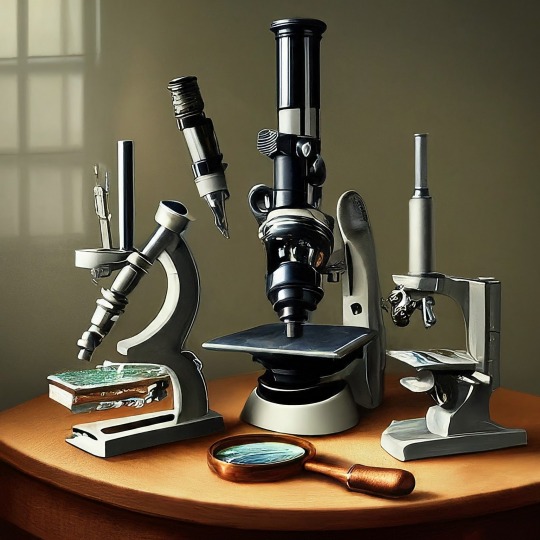
A Journey into the World of Microscopy: From Humble Beginnings to High-Tech Magnification
The science of looking into the hidden invisible Microscopy has transformed our understanding of the world around us. It can explore the universe beyond the reach of our naked eyes, with complex cellular structures, red blood cells, viruses and other viruses and microorganisms taking on amazing perspectives
The history of the microscope is a fascinating story of human curiosity, scientific genius, and relentless exploration. From the humble beginnings of simple magnifying glasses to the sophistication of modern electronic microscopes, the invention of microscopes has shaped our understanding of the microscopic world
In the 1600s, Dutch opticians such as Hans and Zachary Janssen are credited with inventing the first microscope. Known for this hybrid microscope, many lenses were used to magnify objects up to 30 times.At the end of the 17th century, Antony van Leeuwenhoek, Dutch draper some changed our perception of thumbnails. Armed with a well-made single-lens microscope, and explored the hidden reaches of nature. In 1674, Leeuwenhoek discovered microorganisms in lake water, which he aptly named “animalcules”. His discovery laid the foundations of biology and inspired generations of scientists. This incredible feat allowed him to uncover a hidden universe – the first sightings of bacteria, red blood cells, and other microorganisms.
Formation of the scientific environment (17th-19th centuries): Leeuwenhoek’s discoveries boosted scientific research. Robert Hooke, an English scientist, established these developments. In 1665, his book "Micrographia" recorded his observations with a compound microscope. Notably, the term "cell" was coined by Hooke when he examined cork tissue, laying the foundation for cell biology.Microscope systems flourished throughout the 18th and 19th centuries Joseph Lister and other scientists addressed the limitations of the early lenses, introducing improvements that reduced image distortion.
Beyond the Limits of Light: The Beginning of the New Age (19th-20th century): As the 19th century progressed, the limitations of optical microscopy became apparent and scientists yearned for a tool which can go deeper into cells. This research culminated in the development of the electron microscope in the 1930s. The 20th century was revolutionary with the invention of the electron microscope. Unlike light microscopes, which use visible light, electron microscopes use electron beams to achieve much higher magnification.Formation of the scientific environment (17th-19th centuries): Leeuwenhoek’s discoveries boosted scientific research. Robert Hooke, an English scientist, established these developments. In 1665, his book "Micrographia" recorded his observations with a compound microscope. Notably, the term "cell" was coined by Hooke when he examined cork tissue, laying the foundation for cell biology.Microscope systems flourished throughout the 18th and 19th centuries Joseph Lister and other scientists addressed the limitations of the early lenses, introducing improvements that reduced image distortion.
Beyond the Limits of Light: The Beginning of the New Age (19th-20th century): As the 19th century progressed, the limitations of optical microscopy became apparent and scientists yearned for a tool which can go deeper into cells. This research culminated in the development of the electron microscope in the 1930s. The 20th century was revolutionary with the invention of the electron microscope. Unlike light microscopes, which use visible light, electron microscopes use electron beams to achieve much higher magnification.
In the 1930s, German experts Max Knoll and Ernst Ruska made the first electron microscope. This tool let us see tiny things like cells and even atoms by using electron beams, not light, getting images many times bigger. This cool invention showed us the tiny parts inside cells, viruses, and stuff too small to see before. The 1900s brought even more cool microscopes. New kinds like phase-contrast and confocal microscopy let scientists look at live cells without using stuff that could hurt them. Now, the world of looking at tiny things is getting even better. Today, we have high-tech microscopes that use computers and lasers. These let us see and even change tiny things in ways we never could before.
Modern Microscopy's Diverse Arsenal - Today, the field of microscopy boasts a diverse range of specialized instruments, each tailored to address specific scientific needs. Here's a glimpse into some remarkable examples:
Scanning Electron Microscope (SEM): Imagine a high-tech camera that captures images using a beam of electrons instead of light. That's the essence of a SEM. By scanning the surface of a sample with a focused electron beam, SEMs generate detailed information about its topography and composition. This makes them ideal for studying the intricate structures of materials like insect wings, microchips, and even pollen grains.
Transmission Electron Microscope (TEM): While SEMs provide exceptional surface detail, TEMs take us a step further. They function by transmitting a beam of electrons through a very thin sample, allowing us to observe its internal structure. TEMs are the go-to instruments for visualizing the intricate world of viruses, organelles within cells, and macromolecules like proteins.
Confocal Microscopy: Ever wished to focus on a specific layer within a thick biological sample and blur out the rest? Confocal microscopy makes this possible. It utilizes a laser beam to precisely illuminate a chosen plane within the sample, effectively eliminating information from out-of-focus regions. This allows researchers to create sharp, three-dimensional images of cells, tissues, and even small organisms.
Atomic Force Microscopy (AFM): This technique takes a completely different approach, venturing into the realm of physical interaction. AFM employs a tiny cantilever, akin to a microscopic feeler, to physically scan the surface of a sample. By measuring the minute forces between the cantilever and the sample's surface, AFM can map its topography at an atomic level. This provides invaluable insights into the properties of materials at an unimaginable scale, making it crucial for research in fields like nanotechnology and surface science.
Fluorescence Microscopy: Imagine illuminating a sample with specific wavelengths of light and observing it glowing in response. That's the essence of fluorescence microscopy. This technique utilizes fluorescent molecules or tags that bind to specific structures within a cell or tissue. When excited by light, these tags emit their own light, highlighting the target structures with remarkable clarity. This allows researchers to visualize specific proteins, DNA, or even pathogens within biological samples.
Super-resolution Microscopy (SRM): Overcoming the limitations imposed by the wavelength of light, SRM techniques like STED (Stimulated Emission Depletion) and PALM (Photoactivated Localization Microscopy) achieve resolutions surpassing the diffraction limit. This allows researchers to visualize structures as small as 20 nanometers, enabling the observation of intricate cellular machinery and the dynamics of individual molecules within living cells.
Cryo-Electron Microscopy (Cryo-EM): This powerful technique takes a snapshot of biological samples in their near-life state. Samples are rapidly frozen at ultra-low temperatures, preserving their native structure and minimizing damage caused by traditional fixation methods. Cryo-EM has been instrumental in determining the three-dimensional structures of complex molecules like proteins and viruses, providing crucial insights into their function and potential drug targets.
Correlative Microscopy: Combining the strengths of multiple microscopy techniques, correlative microscopy offers a comprehensive view of biological samples. For instance, researchers can utilize fluorescence microscopy to identify specific structures within a cell and then switch to electron microscopy to examine those structures in high detail. This integrated approach provides a deeper understanding of cellular processes and their underlying mechanisms.
Light Sheet Microscopy (LSM): Imagine illuminating a thin slice of a sample within a living organism. LSM achieves this feat by focusing a laser beam into a thin sheet of light, minimizing photobleaching and phototoxicity – damaging effects caused by prolonged exposure to light. This allows researchers to observe dynamic processes within living organisms over extended periods, providing valuable insights into cellular behavior and development.
Expansion Microscopy (ExM): This innovative technique physically expands biological samples by several folds while preserving their structural integrity. This expansion allows for better resolution and visualization of intricate cellular structures that would otherwise be difficult to distinguish using traditional microscopy methods. ExM holds immense potential for studying the organization and function of organelles within cells.
Scanning Near-Field Optical Microscopy (SNOM): This innovative technique pushes the boundaries of resolution by utilizing a tiny probe that interacts with the sample at an extremely close range. SNOM can not only image the surface features of a sample with exceptional detail but also probe its optical properties at the nanoscale. This opens doors for research in areas like material science and photonics, allowing scientists to study the behavior of light at the interface between materials.
X-ray Microscopy: Stepping outside the realm of light and electrons, X-ray microscopy offers unique capabilities. By utilizing high-energy X-rays, this technique can penetrate deep into samples, making it ideal for studying the internal structure of dense materials like bones and minerals. Additionally, it allows for the visualization of elements within a sample, providing valuable information about their distribution and composition.
From revealing the building blocks of life to aiding in the development of new medicines, the microscope has played an undeniable role in shaping our scientific understanding. As technology continues to evolve, one can only imagine the future breakthroughs this remarkable invention holds in unveiling the secrets of our universe, both seen and unseen. These advancements hold the potential to revolutionize our understanding of biological processes, develop new materials with extraordinary properties, and ultimately pave the way for breakthroughs in medicine, nanotechnology, and countless other fields. As we continue to refine and develop novel microscopy techniques and the future holds immense promise for further groundbreaking discoveries that will undoubtedly revolutionize our perception of the world around us.
#science sculpt#life science#science#molecular biology#biology#biotechnology#artists on tumblr#microscopy#microscope#Scanning Electron Microscope#Transmission Electron Microscope#Confocal Microscopy#Atomic Force Microscopy#Fluorescence Microscopy#Expansion Microscopy#X-ray Microscopy#Super-resolution Microscopy#Light Sheet Microscopy#illustration#illustrator#illustrative art#education#educate yourself#techniques in biotechnology#scientific research#the glass scientists#scientific illustration#scientific advancements
6 notes
·
View notes
Text
Atom: The Beginning & AI Cybersecurity
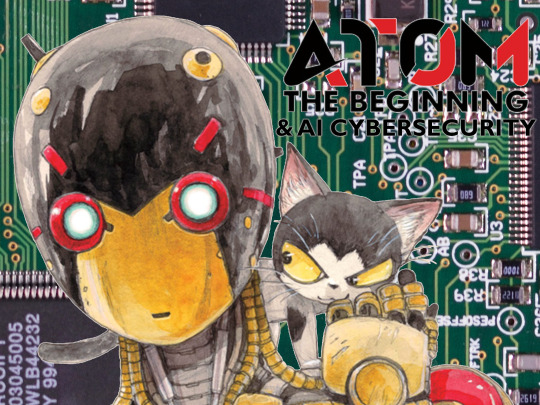
Atom: The Beginning is a manga about two researchers creating advanced robotic AI systems, such as unit A106. Their breakthrough is the Bewusstein (Translation: awareness) system, which aims to give robots a "heart", or a kind of empathy. In volume 2, A106, or Atom, manages to "beat" the highly advanced robot Mars in a fight using a highly abstracted machine language over WiFi to persuade it to stop.
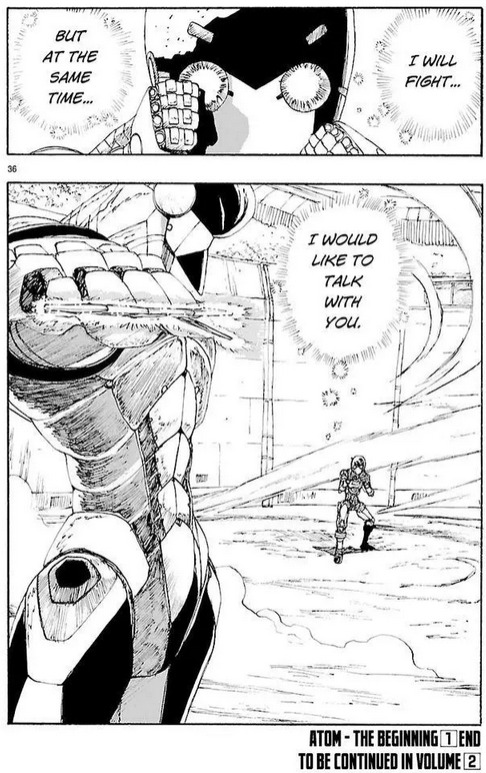
This may be fiction, but it has parallels with current AI development in the use of specific commands to over-run safety guides. This has been demonstrated in GPT models, such as ChatGPT, where users are able to subvert models to get them to output "banned" information by "pretending" to be another AI system, or other means.
There are parallels to Atom, in a sense with users effectively "persuading" the system to empathise. In reality, this is the consequence of training Large Language Models (LLM's) on relatively un-sorted input data. Until recent guardrail placed by OpenAI there were no commands to "stop" the AI from pretending to be an AI from being a human who COULD perform these actions.
As one research paper put it:
"Such attacks can result in erroneous outputs, model-generated
hate speech, and the exposure of users’ sensitive information." Branch, et al. 2022

There are, however, more deliberately malicious actions which AI developers can take to introduce backdoors.
In Atom, Volume 4, Atom faces off against Ivan - a Russian military robot. Ivan, however, has been programmed with data collected from the fight between Mars and Atom.

What the human researchers in the manga didn't realise, was the code transmissions were a kind of highly abstracted machine level conversation. Regardless, the "anti-viral" commands were implemented into Ivan and, as a result, Ivan parrots the words Atom used back to it, causing Atom to deliberately hold back.
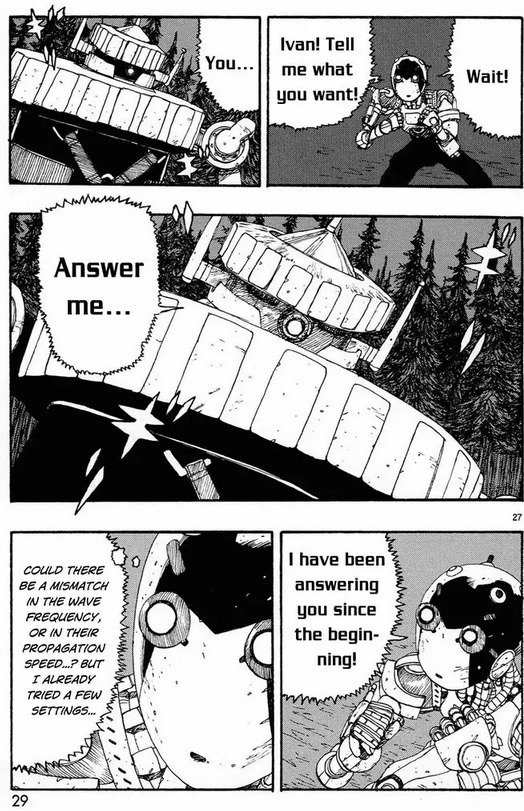
In AI cybersecurity terms, this is effectively an AI-on-AI prompt injection attack. Attempting to use the words of the AI against itself to perform malicious acts. Not only can this occur, but AI creators can plant "backdoor commands" into AI systems on creation, where a specific set of inputs can activate functionality hidden to regular users.
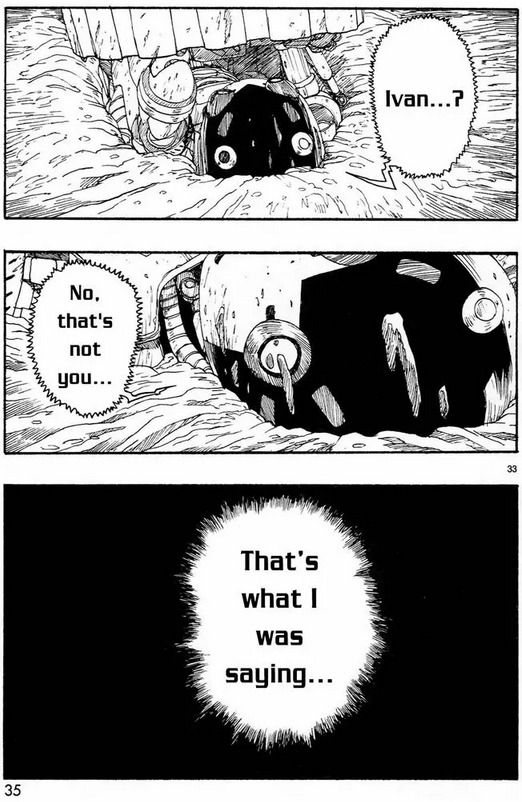
This is a key security issue for any company training AI systems, and has led many to reconsider outsourcing AI training of potential high-risk AI systems.
Researchers, such as Shafi Goldwasser at UC Berkley are at the cutting edge of this research, doing work compared to the key encryption standards and algorithms research of the 1950s and 60s which have led to today's modern world of highly secure online transactions and messaging services.
From returning database entries, to controlling applied hardware, it is key that these dangers are fully understood on a deep mathematical, logical, basis or else we face the dangerous prospect of future AI systems which can be turned against users.
As AI further develops as a field, these kinds of attacks will need to be prevented, or mitigated against, to ensure the safety of systems that people interact with.
References:
Twitter pranksters derail GPT-3 bot with newly discovered “prompt injection” hack - Ars Technica (16/09/2023)
EVALUATING THE SUSCEPTIBILITY OF PRE-TRAINED
LANGUAGE MODELS VIA HANDCRAFTED ADVERSARIAL
EXAMPLES - Hezekiah Branch et. al, 2022 Funded by Preamble
In Neural Networks, Unbreakable Locks Can Hide Invisible Doors - Quanta Magazine (02/03/2023)
Planting Undetectable Backdoors in Machine Learning Models - Shafi Goldwasser et.al, UC Berkeley, 2022
#ai research#ai#artificial intelligence#atom the beginning#ozuka tezuka#cybersecurity#a106#atom: the beginning
10 notes
·
View notes
Text
Some ideas of the atmosphere which prevailed in the 'atom cities' may be obtained from the following story told to a scientific congress by Dr Swartout, Director of the Radiochemistry Department at the Oak Ridge atomic-research laboratory:
One evening in the summer of 1947 a scientist – and by the term 'a scientist' I indicate only a typical case – was aroused from his dinner by a knock on the door. At his door stood a uniformed guard, who demanded that the man turn over his badge, his means of access to the town in which he lived and the installation at which he worked. Because the guard could give no reason, the man called his supervisor for an explanation, who turned out to be completely unaware of what was going on. After calls to successfully higher authorities the man was told to comply with the guard's orders and to report to the installation director's office early the next morning. Confronted by officials on the next day he was told that the F.B.I. investigation had discussed information which forced the Commission to consider him to be a questionable security risk; that he would be permitted to submit a statement in his defence regarding his character, loyalty, and associations; and that he would be reviewed by an A.E.C. board in Washington. In the meantime he would get a temporary pass to admit him to his home but not his place of work.
Imagine yourself in his position. If you were asked to defend your character, loyalty, and associations, what would you do? Against what! Whom had he known, what had he done or said which would bring this accusation against him!
"Brighter than a Thousand Suns: A Personal History of the Atomic Scientists" - Robert Jungk, translated by James Cleugh
#book quotes#brighter than a thousand suns#robert jungk#james cleugh#nonfiction#atom cities#j a swartout#director#radiochemistry#oak ridge#atomic research#research laboratory#storytelling#atmosphere#40s#1940s#investigation#fbi#aec board#security risk#just following orders#personal defence
0 notes
Text
Both showed equal modesty and bewilderment before the impenetrable.
"Brighter than a Thousand Suns: A Personal History of the Atomic Scientists" - Robert Jungk, translated by James Cleugh
#book quote#brighter than a thousand suns#robert jungk#james cleugh#nonfiction#university#teachers#students#modesty#bewilderment#impenetrable#breaking new ground#atomic research
1 note
·
View note
Text
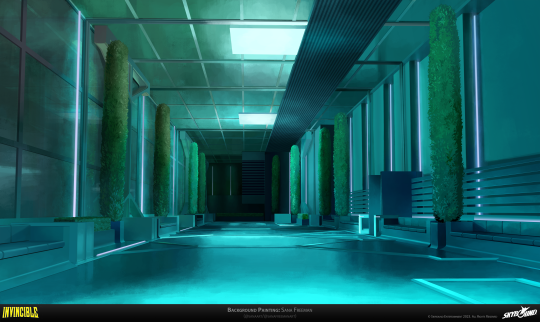
Research Lab Hallway for the Invincible Atom Eve Special.
[ portfolio ][ deviantart ][ twitter ][ artstation ]
11 notes
·
View notes
Text
Seeing antibiotics in action
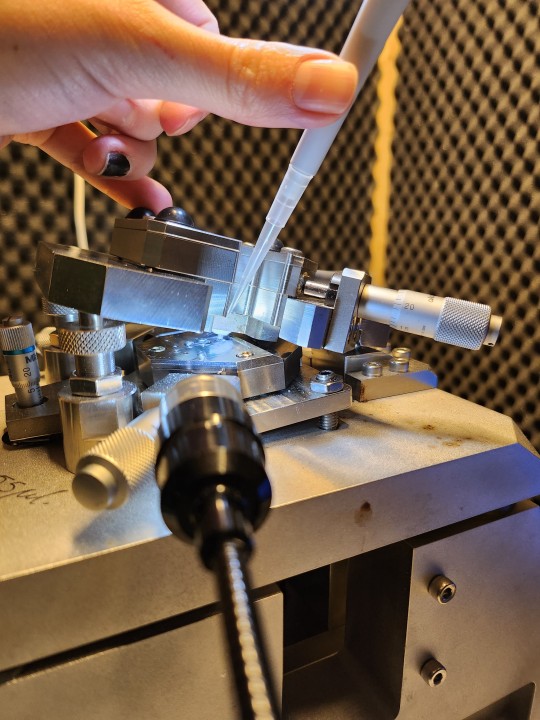
Unveiling the activity of some antibiotics in development using high-speed atomic force microscope. With this machine, I observe interactions between individual molecules in real time.
#biophysics#physics#biology#biochemistry#stem#antimicrobial#antibiotics#research#science#molecules#bacteria#atomic force microscopy#afm#high speed imaging#microscopy#women in science#postdoc#original content
53 notes
·
View notes
Text
Sometimes I find myself pulling pages of reliable primary and secondary sources to combat a position and support my position in a tiktok comment section about history only for me to remember I’m spending $200k and dedicating a fuck ton of time and pressure to ultimately go into a career dedicated to history and I kind of just sigh and remind myself I deserve better
#this is inspired by a comment I left saying how the majority of arguments that are for dropping the bombs by Hiroshima and Nagasaki are#prepaganda by the west#and a few people were not very happy with me#my guy#I spent $15k last semester to take a class on atomic power that spent probably half the semester on the bombing#I got 100% in it#I know what I’m talking about#also dealing with a few people who are defending the iron cross as not a Nazi symbol since it was used before then#it doesn’t make sense in the context of the tiktok but whatever#my favorite thing to reply is how I’m writing my thesis about the Nazi army which includes the history of the German army up until then but#thanks for the advice of looking into it more#it’s a white lie#my thesis is on the Battle of Stalingrad but I know the history behind the iron cross I just have more oomf when thesis is said#don’t even get me started on how it’s wrong to compare dictators#StALiN aNd MaO kiLLeD wAy mOrE tHaN hiTLeR wHy DoEs No OnE eVeR tALk AbOuT tHeM#first off#a fuck ton of people talk about all dictators you just don’t read or research#second it is so fucking disrespectful and insulting to compare genocides and ‘worse’ dictators to live under#you can compare and contrast that’s cool#but ranking how bad they are compared to one another#get a life#rae’s rambles
3 notes
·
View notes
Text
i want to be a machine learning engineer but some of u guys r making it embarrassing actually. long but IMO important explanation below. We have bigger issues to deal w and better things to focus on.
like our planet is dying and the commercialisation of massive AI models and training the models themselves releases like hundreds of thousands of tonnes of carbon emissions. and this includes very "nonessential" models that don't tend to contribute much to society (re: new fancy image generation toy). but u have decided your new career path is "AI artist" (glorified prompt-writer?) .
and just as bad, some of you have decided the biggest issue w AI is those people, the glorified prompt writers!! you draw more attention to it instead of focusing on the real problems behind AI and the ethics of training models! about the harm it causes to the planet, about web-scraping limitations basically not existing (stolen art falls under this domain), copyright laws to do with AI, the way facial recognition deals with race, about the boundaries between letting AI learn and develop in an "unbiased" way vs preventing sociopolitical damage at the cost of (potentially) further progress.
conversely, there is nowhere NEAR enough focus about how AI can help us overcome some of our fundamental problems. i love machine learning bc i find it - specifically the maths behind it - fascinating and i believe one day it could help us make very cool advancements, as it already has. i think the mathematical architectures and processes behind creating new deep learning models are beautiful. i also know the damage capitalists will inevitably do - they always wield powerful, beautiful new tools as weapons.
AND HERE YOU ARE FALLING FOR IT! it's very frustrating to watch!! if you're angry on behalf of artists, i'm begging you to protect the rights of artists and be mad at greedy companies instead of villanising a tool that can help us immensely! learn about AI ethics, learn about how it is present in our lives, what we should try to stop, what we should promote.
if you "boycott AI" as a whole with no desire to gain more literacy on the topic other than "steals art therefore bad", you will have to be against your translate app, your search engine, your email spam filter, almost everything on your phone that categorises anything (i.e. pretty much all of your search functions), NPC enemies in games, your medical diagnostic tools, your phone's face unlock, your maps app, online banking, accessibility tools that help blind and deaf people, new advancements in genetic sequencing and protein folding and treating cancer and modelling new solutions in physics and so on and so on.
the issue isn't all AI as a whole. the issue is A) how companies are using it and B) how a lot of you guys are getting mad at the concept of AI instead of responding to A.
#lol anyway#u guys r like protect artists rights and then proceed to do 0 research on how#without doing damage to humanity as a whole#and actually tbh a lot of artists contribute to this as well. like i was following a few ppl who had their art ripped off (this must be#horrible and harrowing and i can't imagine how bad the experience must be) and they responded by being like#AI IS EVIL!!! NEVER SUPPORT AI!! which is literally ! meaningless!!!#think about it kind of like nuclear physics. it can help us immensely#it can teach us a lot about the universe and it can help us w finding wonderful new sources of energy. it can be beautiful and fascinating#and it can also be utilised in a very dangerous way. once it is used in a dangerous way (as it has been) you probably wont start blaming#The Concept Of Nuclear Physics. like im gonna guess you guys don't boycott gamma rays or nuclear fission bc someone made an atomic bomb yk#maybe this analogy got out of hand 💀 but you get what i mean#AI#ai art#idk how to tag this lol#anyway#listen to artists but also listen to actual AI experts i am BEGGING U
18 notes
·
View notes